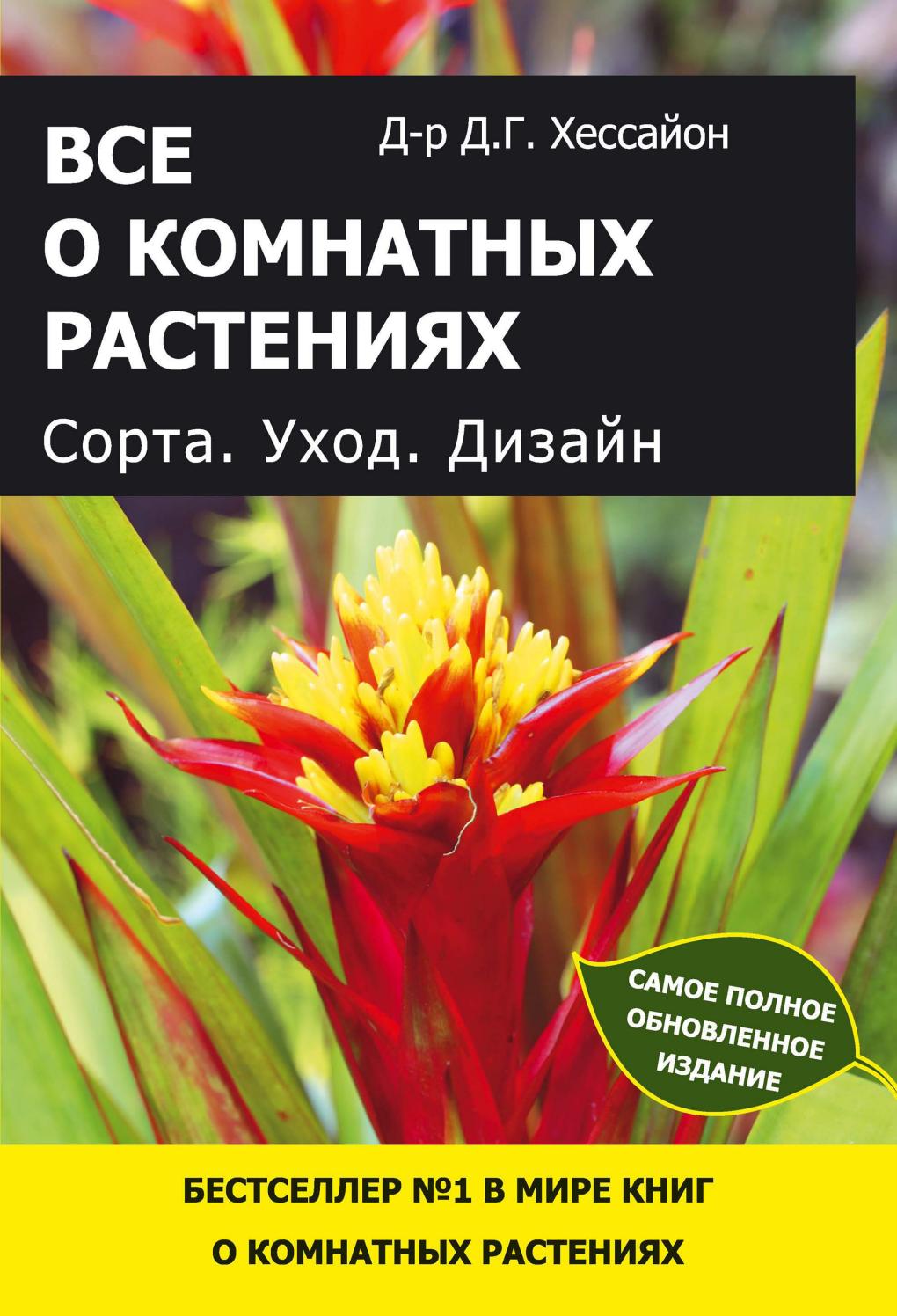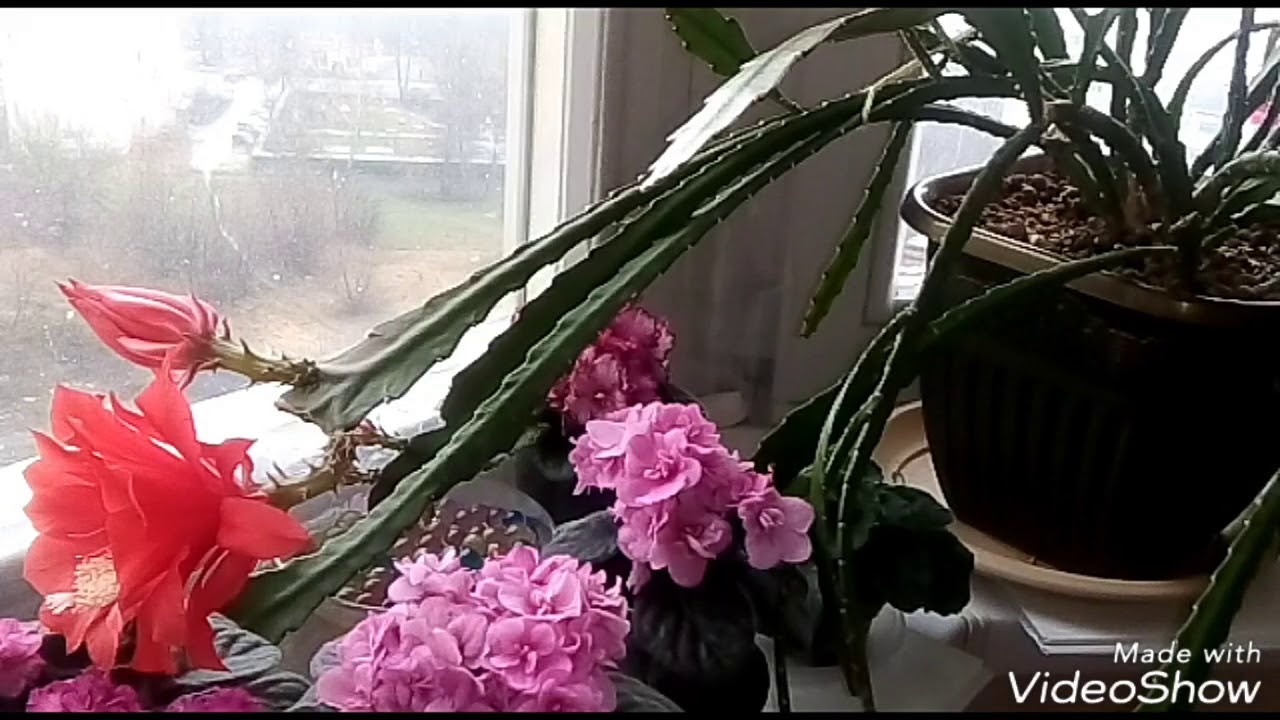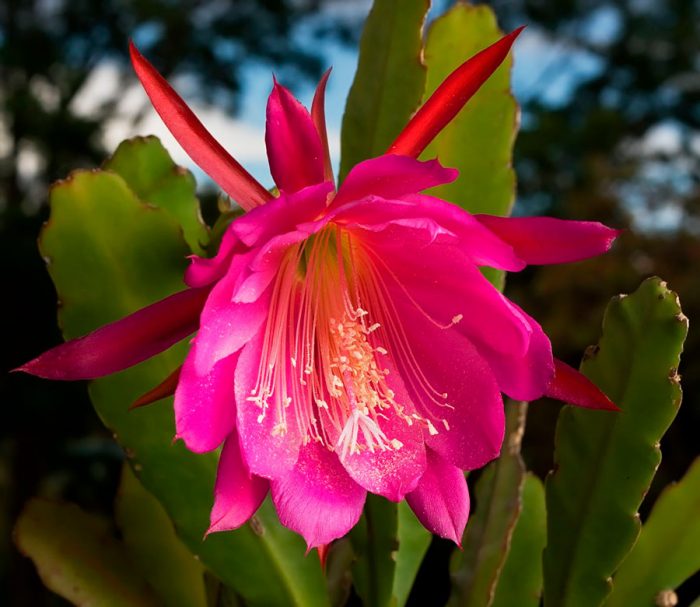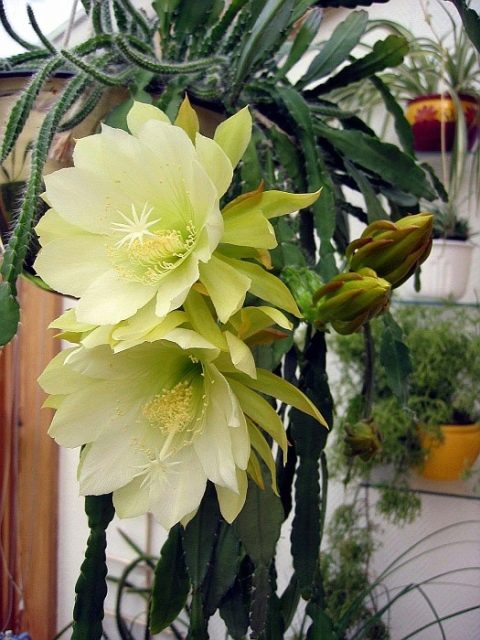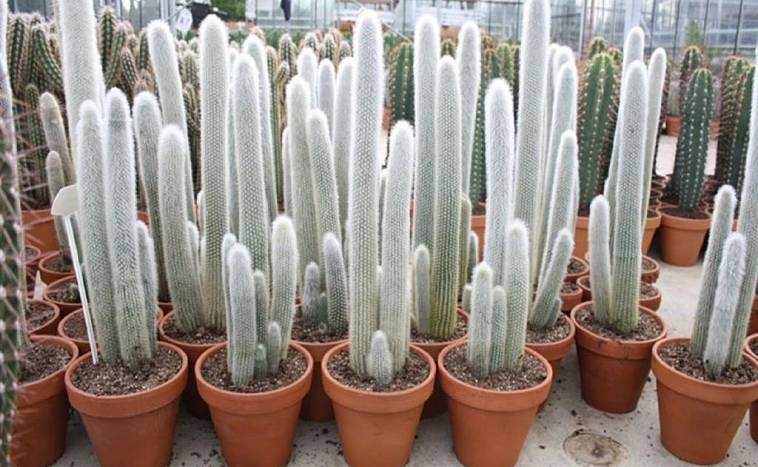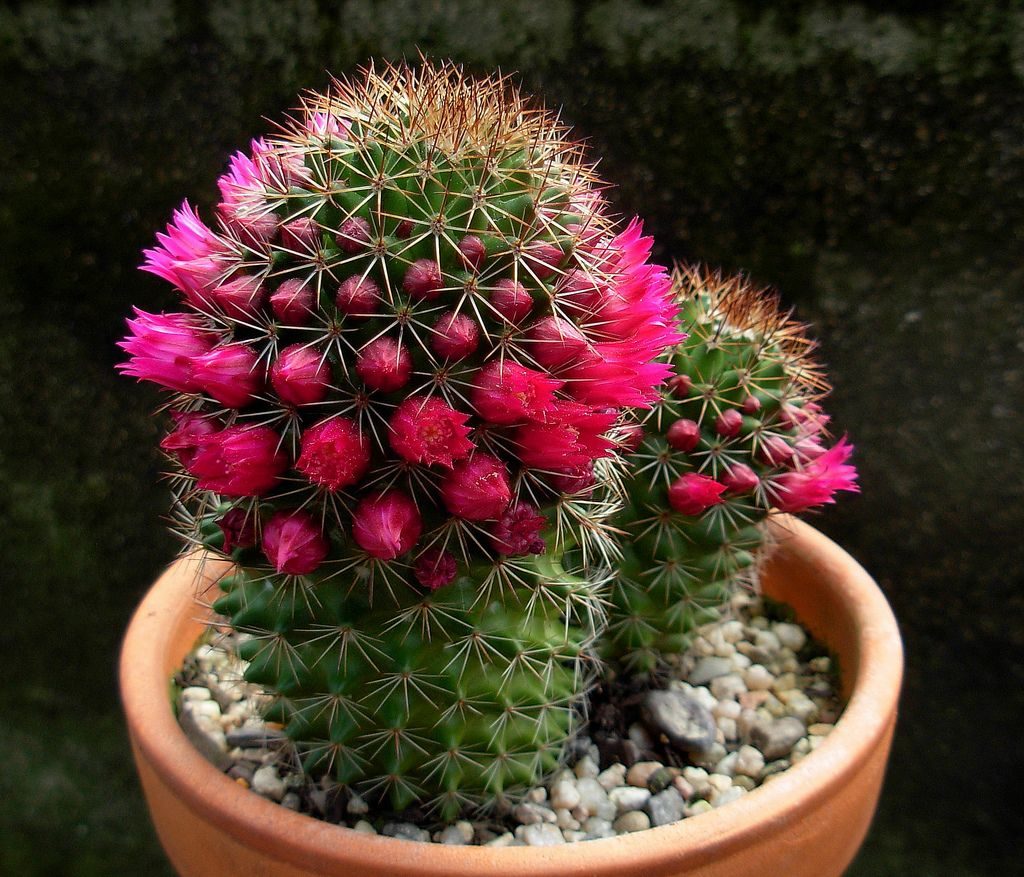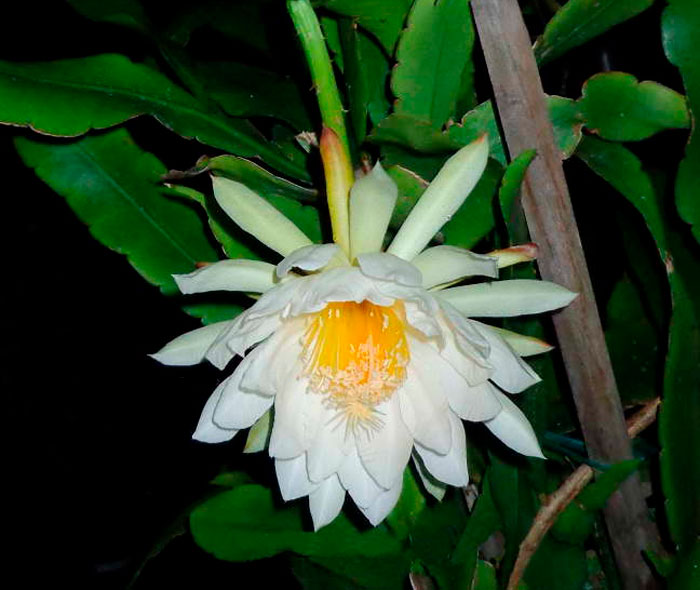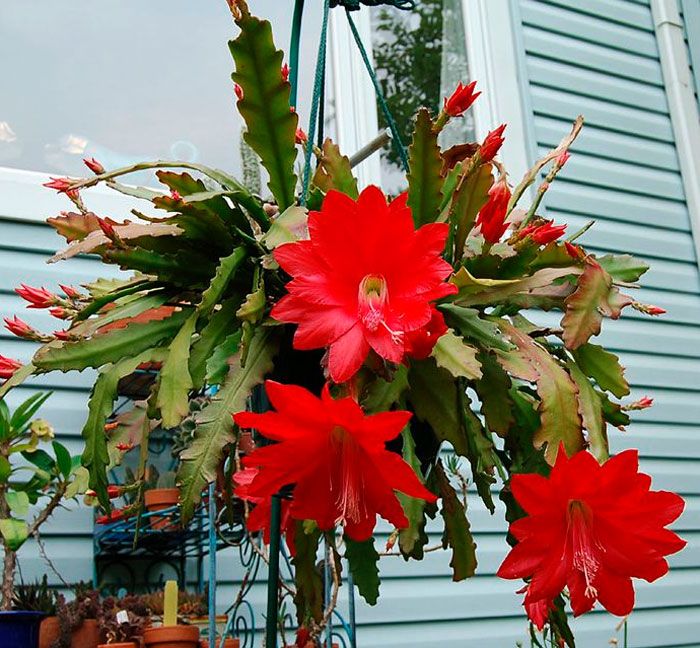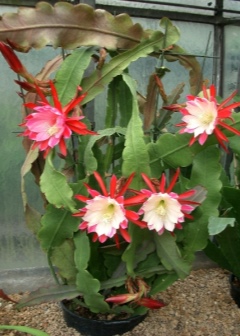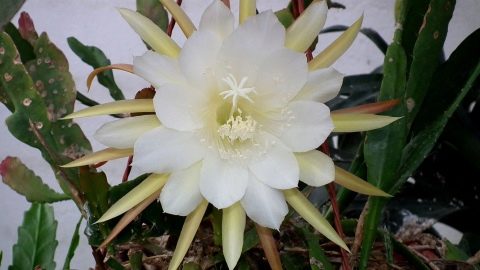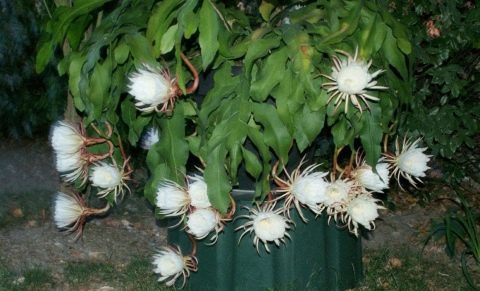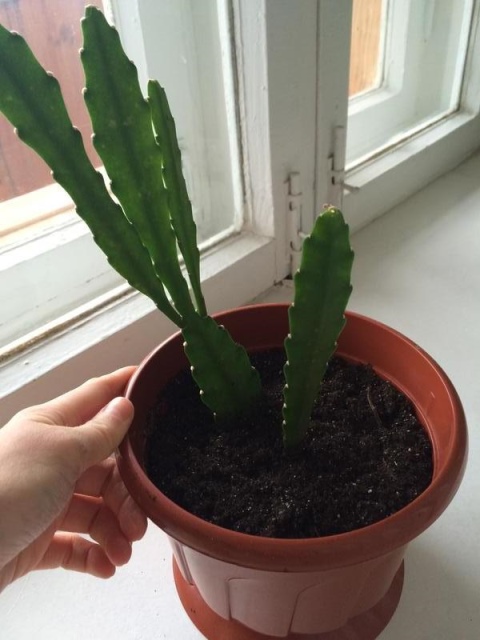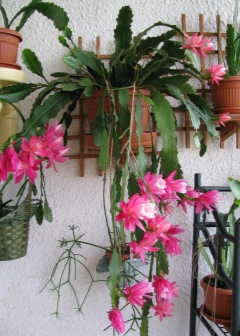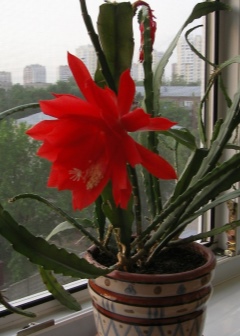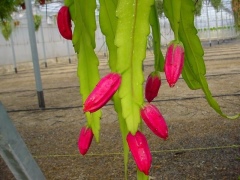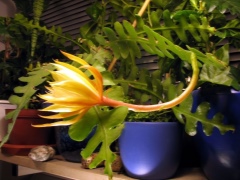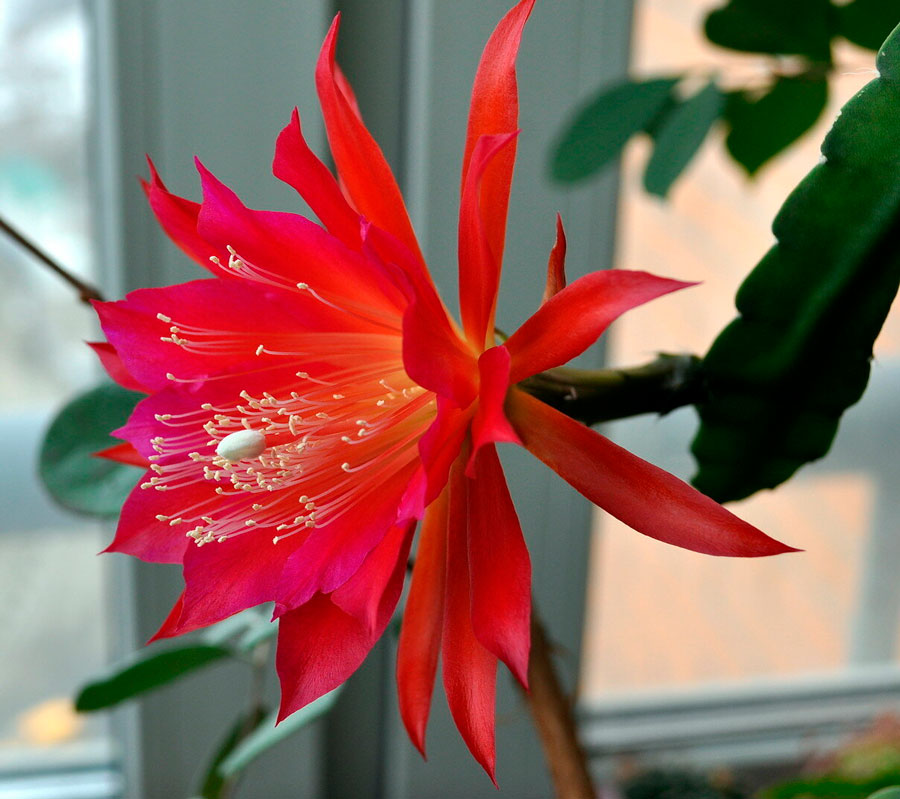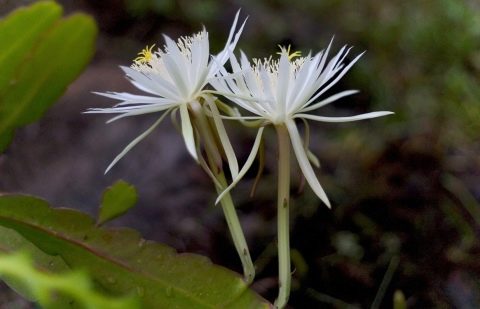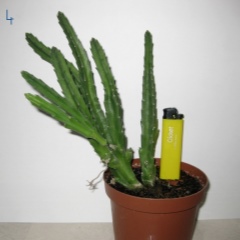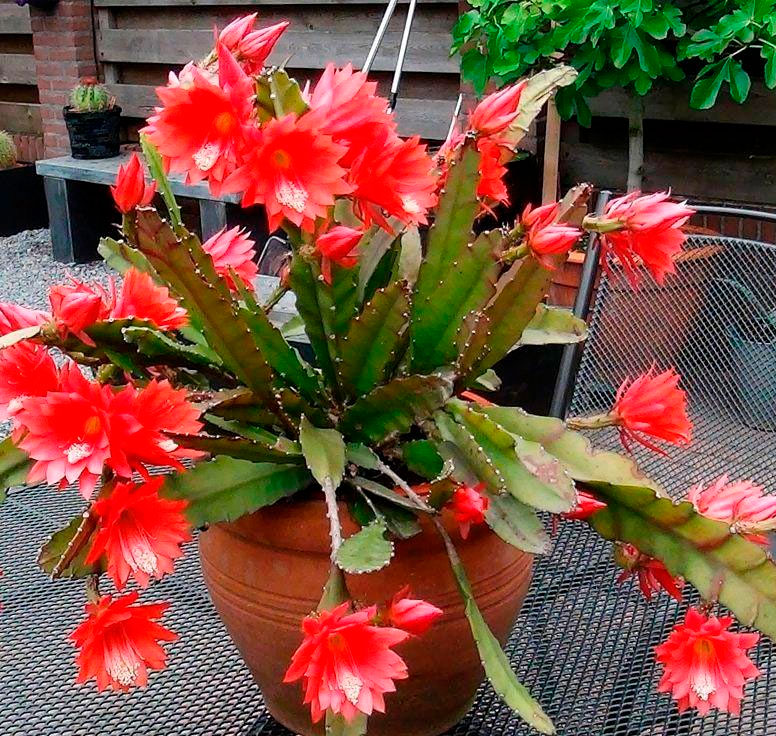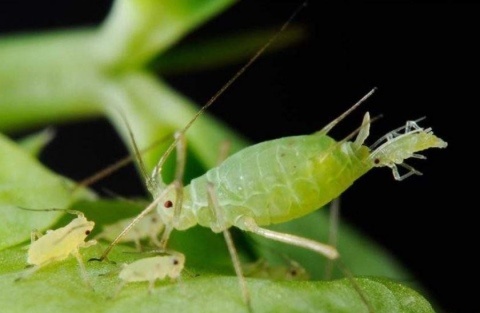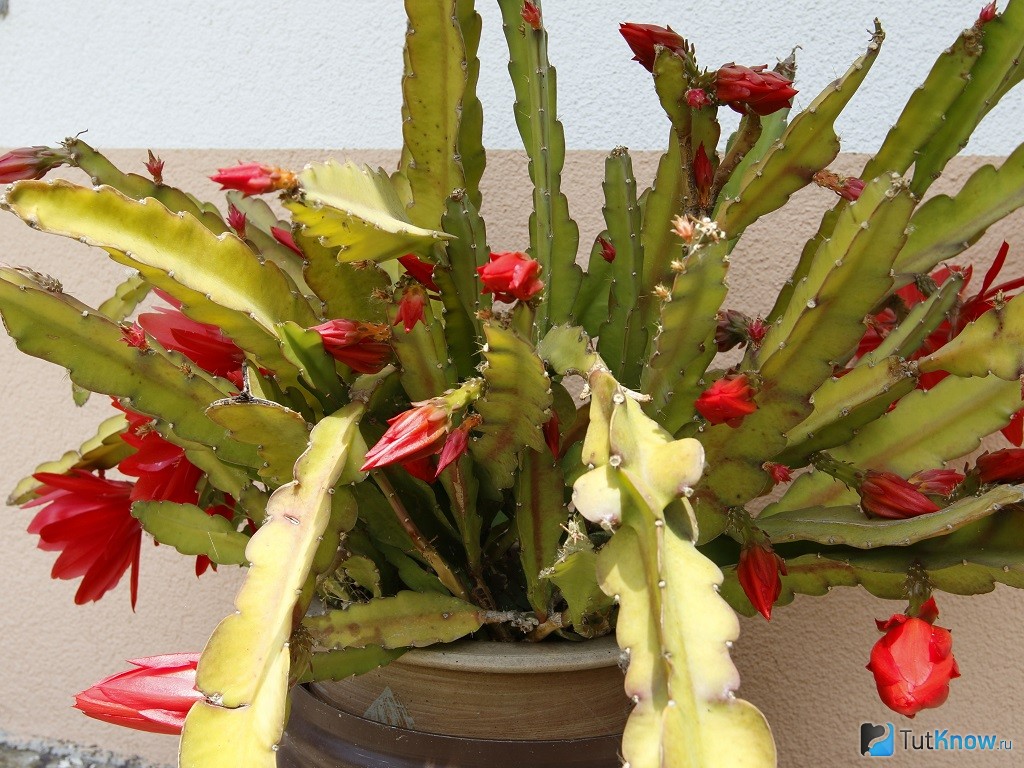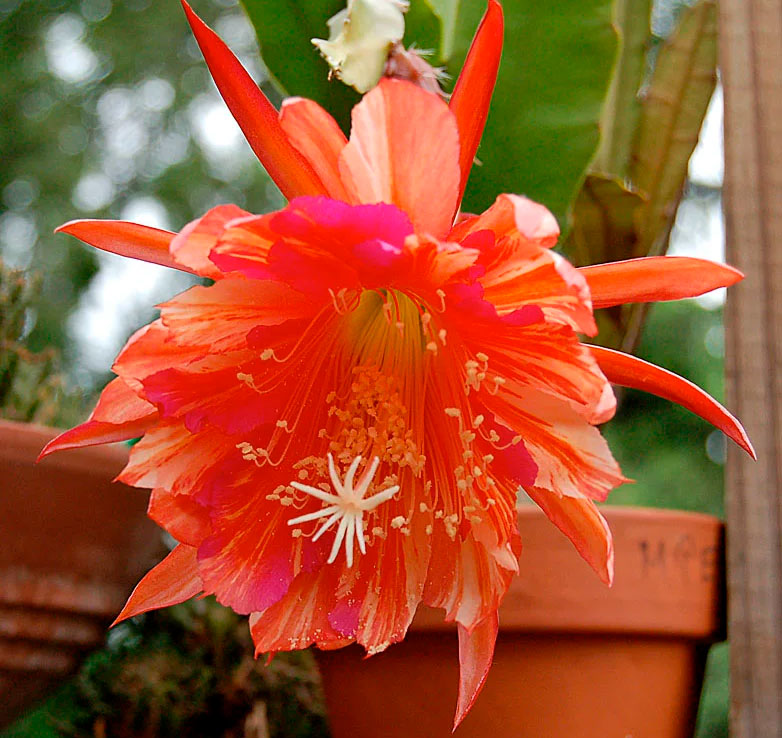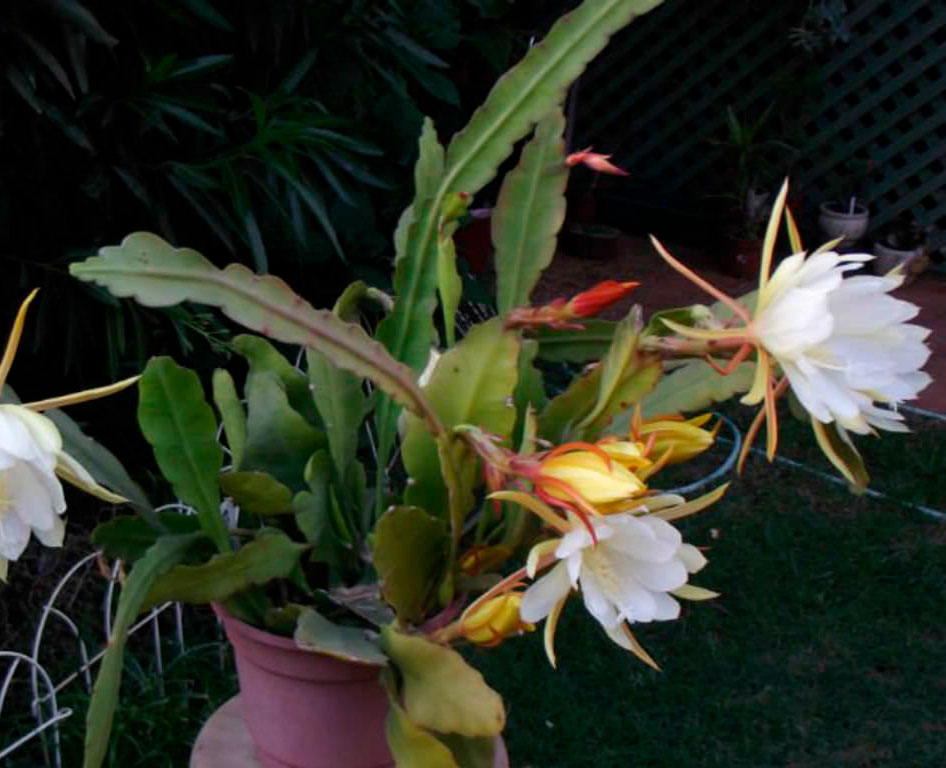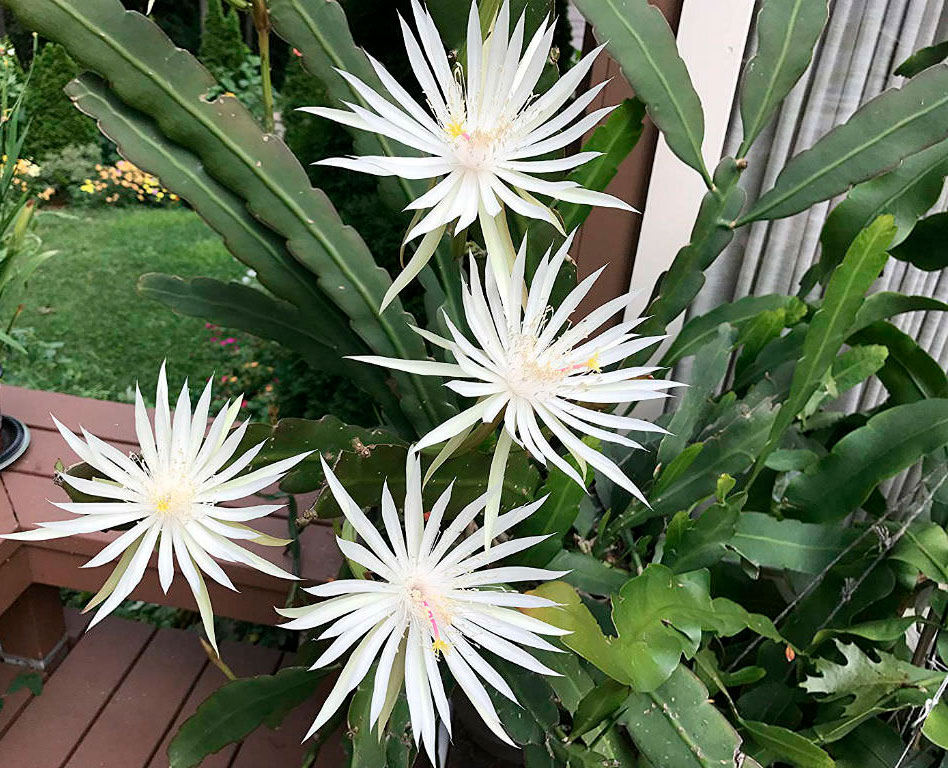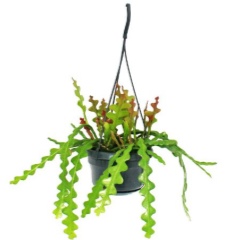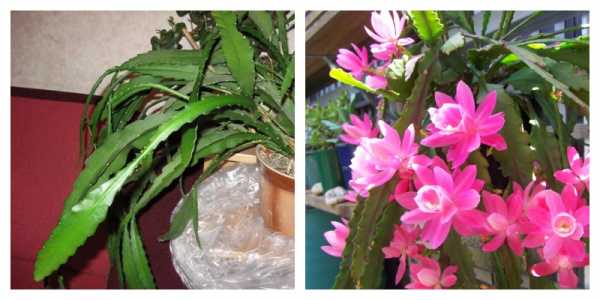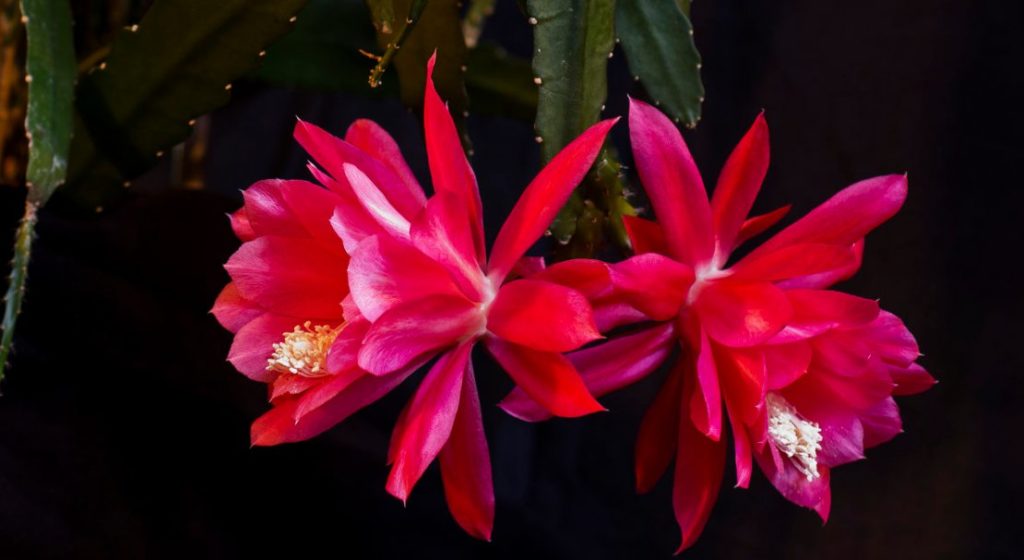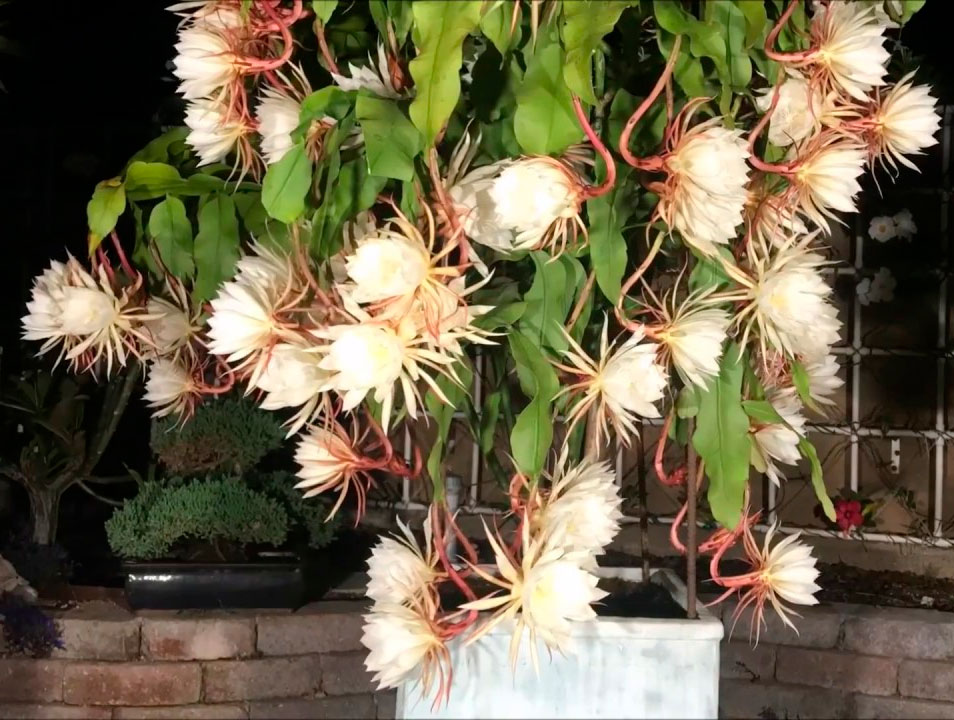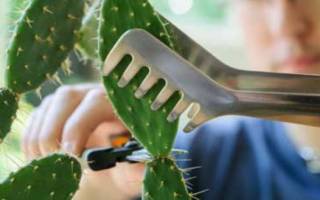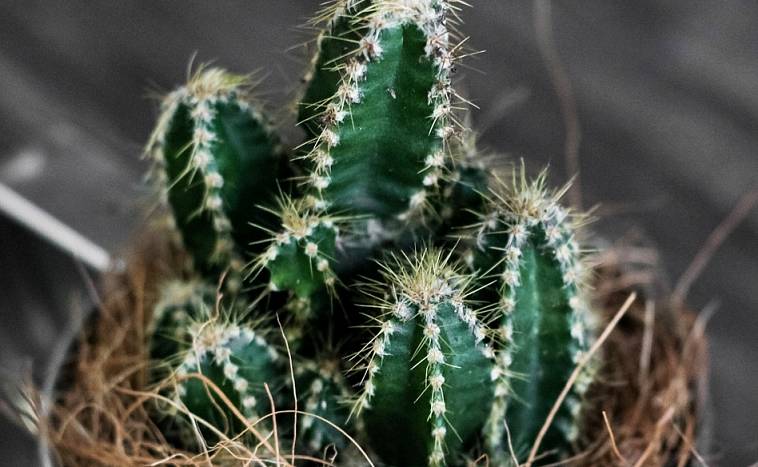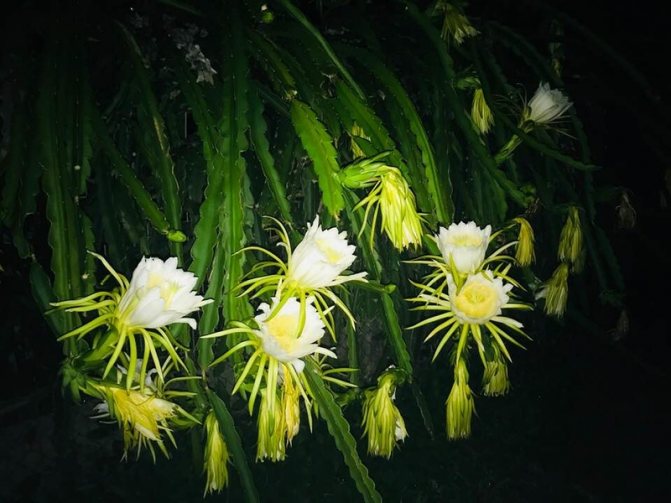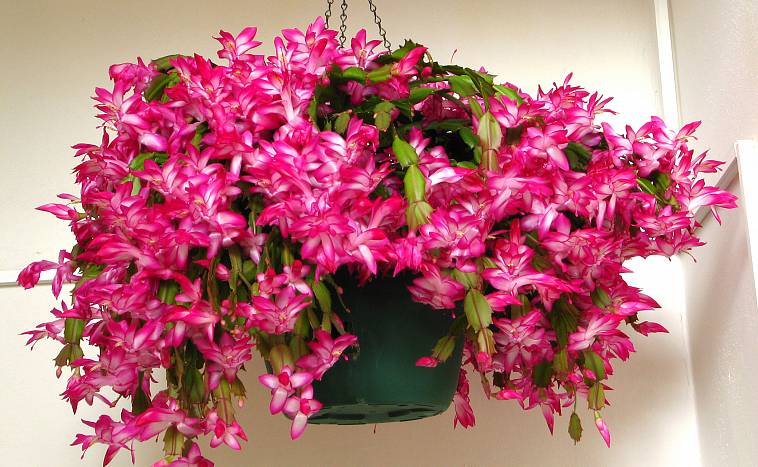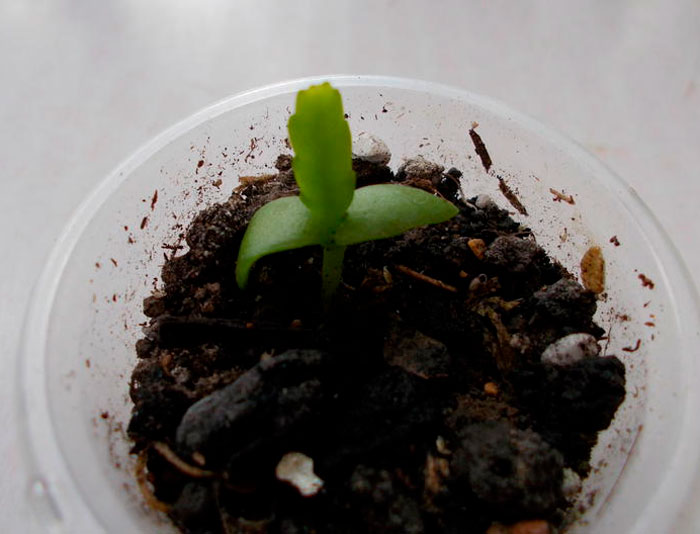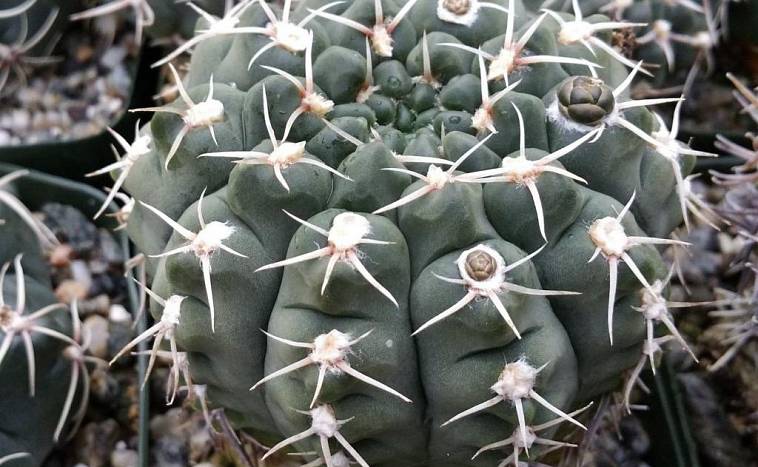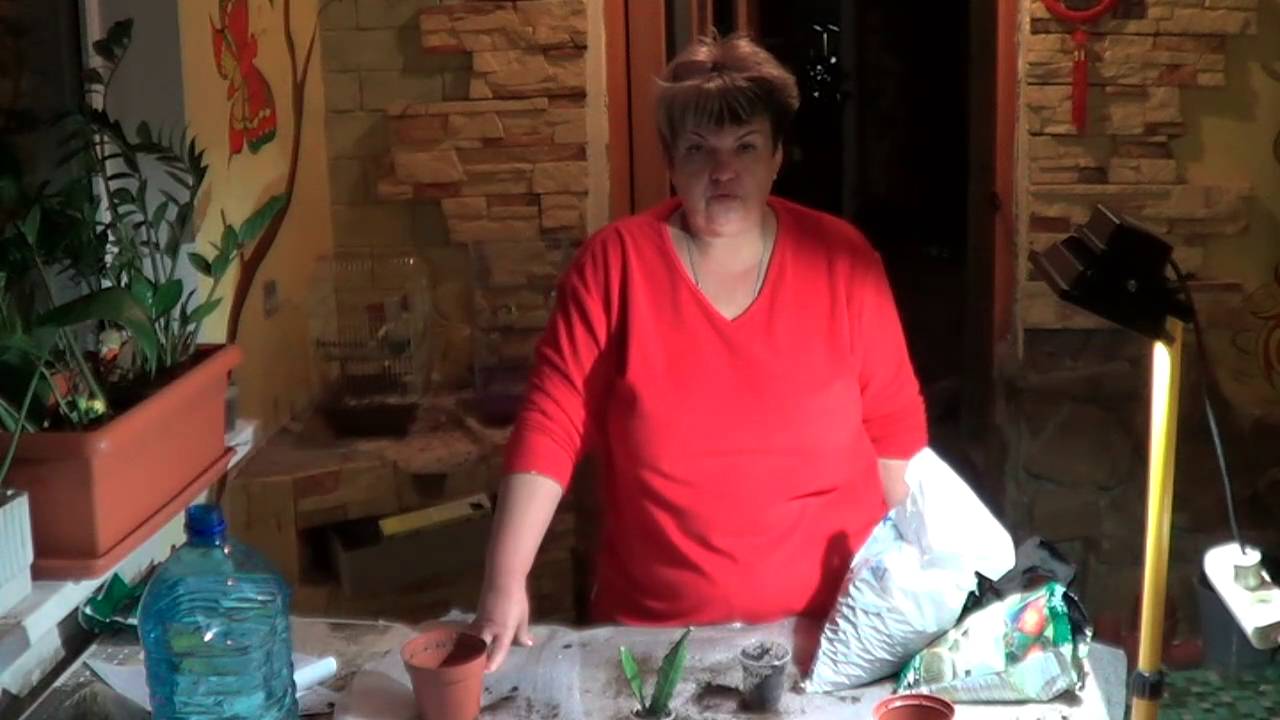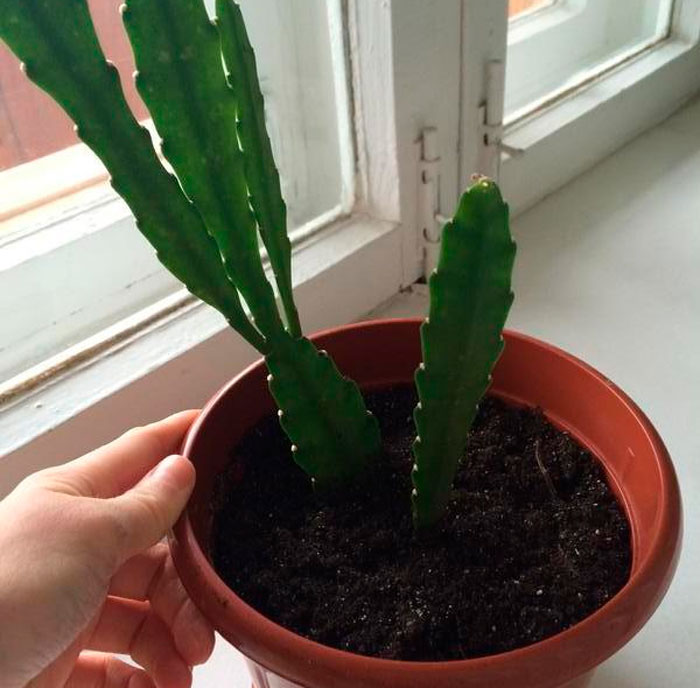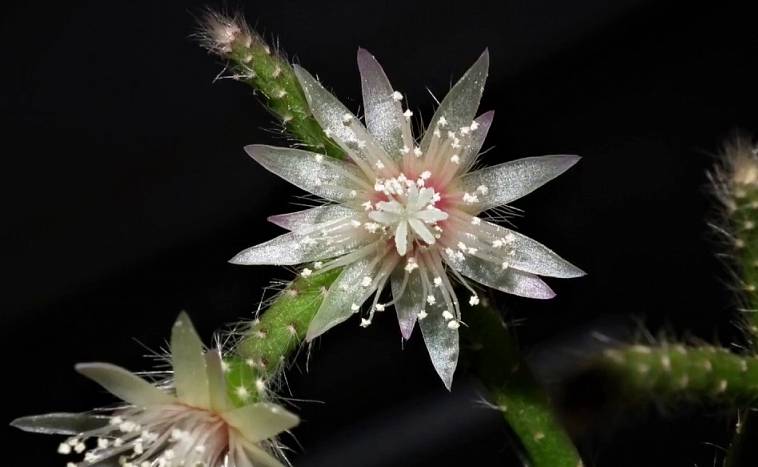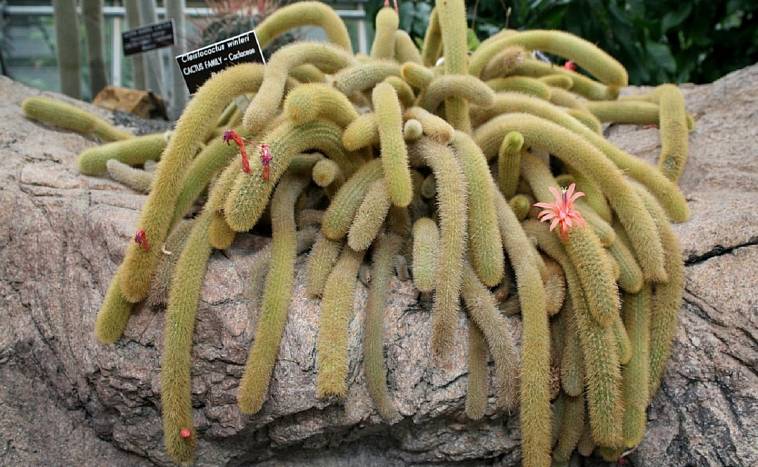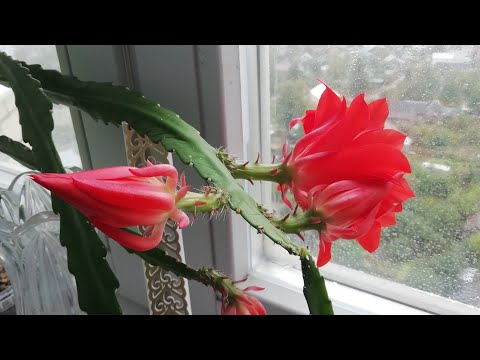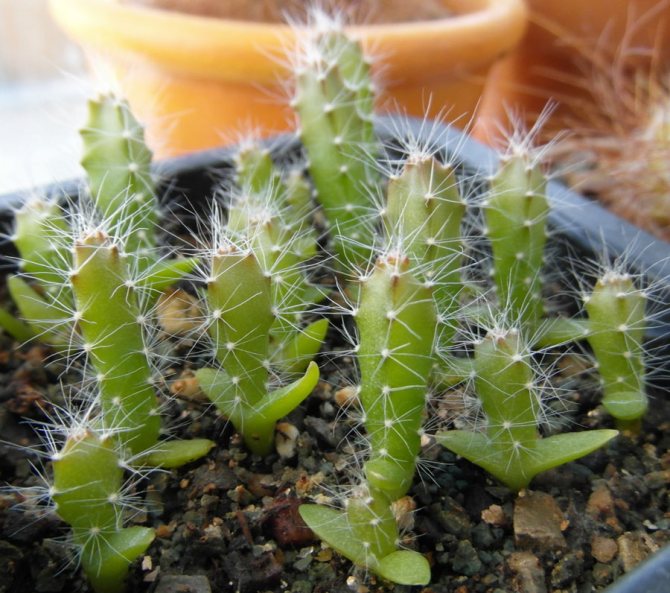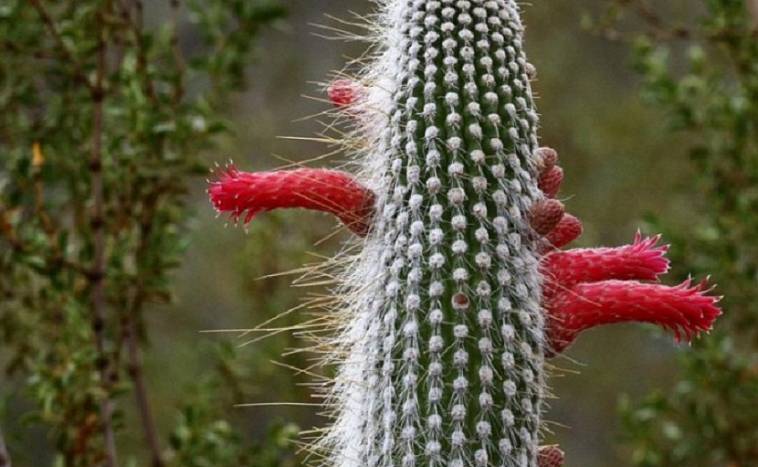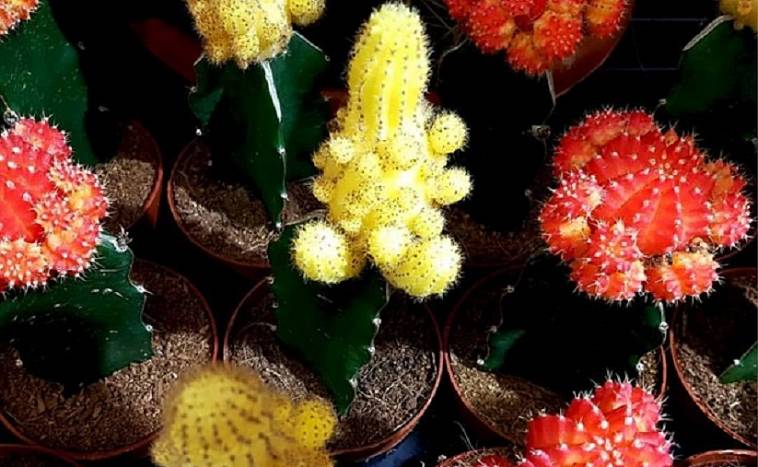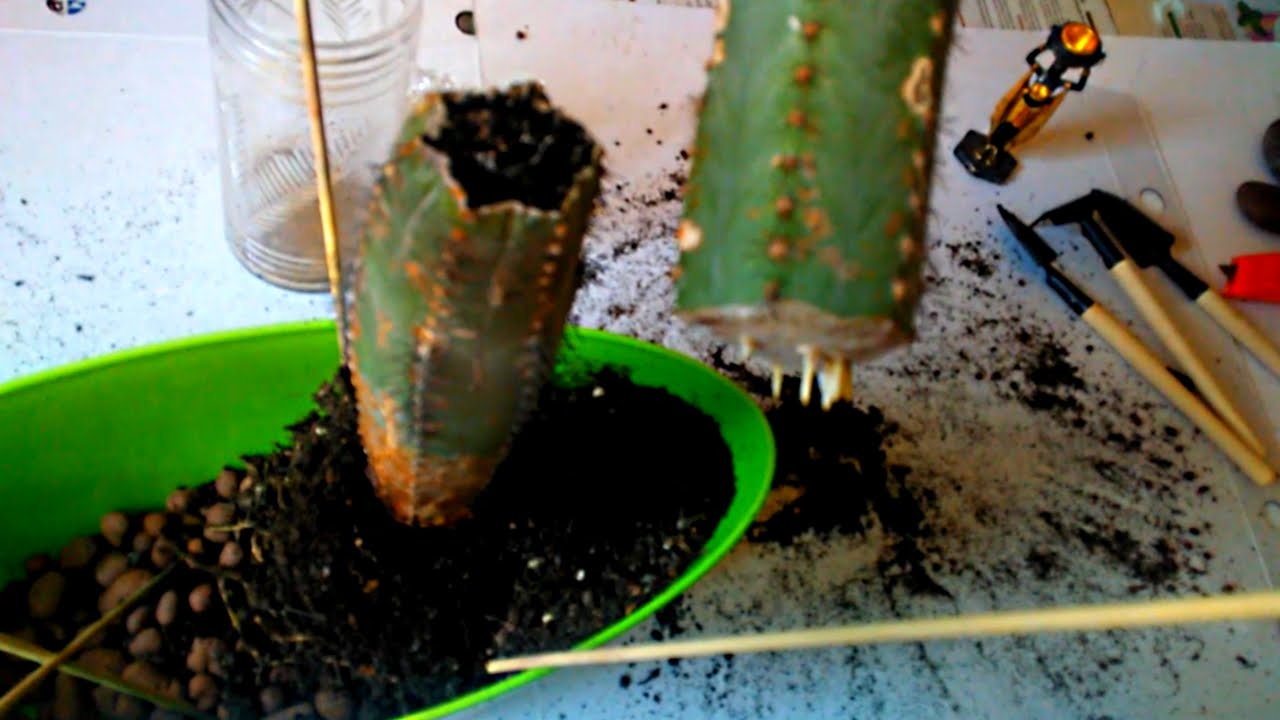Maintenance and care at home
Like all members of the Cactus family, the epiphyllum does not require much attention. However, for normal growth, basic agrotechnical rules must be followed.
Location and lighting
A tropical perennial feels comfortable on western or eastern windows. With a lack of light, the flowering intensity will be significantly reduced, and direct sunlight can leave burns on the fleshy stems. Therefore, if the plant is in the southern part of the house, it must be additionally shaded with a light screen.
Temperature regime
Phyllocactus does not tolerate sudden temperature changes or drafts. During the growing season, the optimal temperature for it will be + 20-25 ° C. When the plant has a dormant period, the indicators are reduced to + 10-15 ° С.
Watering and humidity
Home epiphyllum requires regular, abundant watering. In spring and summer, the flower is moistened as the top layer of the substrate dries, making sure that it is constantly moist. But in winter, the frequency of procedures is reduced to a minimum. For irrigation, use soft, settled, slightly warm water.
Humidity for a forest cactus is not the main condition for a comfortable existence. If the air to the apartment is too dry, wide containers of water are installed nearby, and the plant itself is periodically sprayed from a spray bottle.
 Tropical perennial feels comfortable on western or eastern windows
Tropical perennial feels comfortable on western or eastern windows
Fertilizing
During the growing season, homemade succulents are fertilized every two weeks using complex mineral formulations for cactus crops. When buds begin to form, organic matter (for example, mullein) is introduced. They continue to feed it after flowering, until the onset of a dormant period.
Pruning features
Not all phyllocactus shoots are flowering, some are simply not capable of producing ovaries. So that the volume of flowering does not decrease, the plant is periodically removed:
- old stems that have bloomed two years ago;
- triangular or rounded shoots;
- thin growth;
- lignified, corky or crooked branches.
After pruning, be sure to sprinkle the wounds with crushed activated carbon, cinnamon powder or wood ash.
Author's advice
Reproduction and transplantation of a succulent
Epiphyllum is propagated by methods standard for cactus crops: seeds, cuttings, dividing the bush. Subject to agrotechnical schemes, the plant adapts quite easily and takes root quickly.
Requirements for soil and pot
A perennial grows best on a nutritious, well-drained substrate. You can use ready-made soil mixture for cacti, without lime, with an acidity level of 5-6 pH.
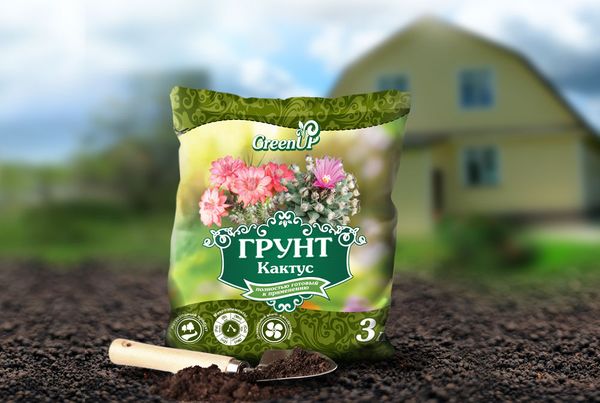 A soil mixture for cacti is suitable for growing a crop.
A soil mixture for cacti is suitable for growing a crop.
However, some growers prepare the soil themselves. It should consist of the following components in a ratio of 1: 4: 1: 1:
- sod land;
- sheet;
- charcoal;
- coarse sand.
The pot for the succulent is selected wide, with large drainage holes. Since the root system of a forest cactus is poorly developed, the pot should not be too spacious or deep.
Transplant rules
The first two years after planting, phyllocactus is transplanted every season, then the multiplicity is reduced to 3-4 years. The procedure is carried out immediately after flowering, using the transshipment method so as not to damage the root system. A new flowerpot is filled with expanded clay or small pebbles, a little fresh substrate is poured, and then a flower is placed in it, covering the free volume with earth. The plant is shaded from the sun and is not watered for the first couple of days.
Growing from seeds
The germination rate of epiphyllum seeds is quite high. Growing a forest cactus in this way is not difficult at all, if you adhere to the following algorithm:
- a shallow container is filled with a slightly moist nutrient substrate, on the surface of which the seed is scattered;
- covered with cling film, allow the seedlings to germinate at a temperature of + 20-23 ° C, airing the "greenhouse" daily;
- after the appearance of the first shoots, the polyethylene is removed, and after 3 months, a pick is carried out.
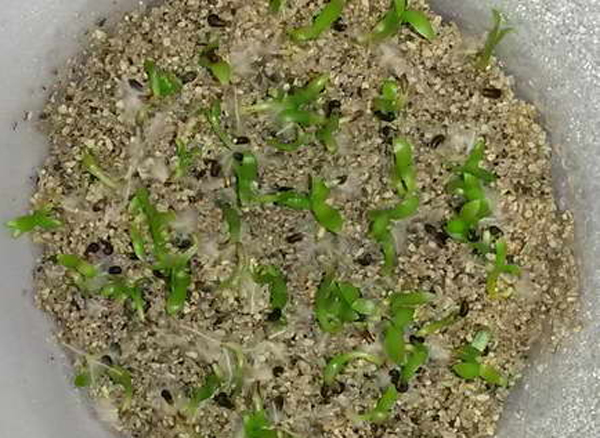 Epiphyllum seed germination is quite high
Epiphyllum seed germination is quite high
Reproduction by division
The procedure is performed when transplanting a perennial. They do it as follows:
- removing the bush from the flowerpot, clean the rhizome from the earth;
- with a sharp, disinfected instrument, divide it into parts;
- the places of the cuts are treated with an antiseptic or fungicide;
- having planted the delenki in new pots, they provide them with care, as for an adult plant.
Propagation by cuttings
A relatively simple method that consists of several stages:
- a stalk about 15 cm long is cut from a strong young shoot with a well-sharpened knife;
- the place of the cut is sprinkled with activated carbon and left to dry for a couple of days;
- then the process is dropped into a fertile substrate to a depth of 2-3 cm, and a centimeter layer of sand is poured on top;
- take care of the seedling as a full-fledged bush.
Temperature control and lighting
During active growth and development, the plant will be comfortable at normal room temperature. When vegetative rest comes, the temperature should be reduced to +10 degrees. In extreme heat, the plant will be able to develop well, but it is necessary to increase watering and increase air humidity. During the spring - summer period, the best temperature is + 20- + 25 degrees.
There are also species that can withstand temperatures below 0, but you should not create such a risky environment for them.
A decrease in temperature to + 10 in winter will contribute to better and more abundant flowering and will not allow the cactus to stretch too much, which is important during a period when there is not enough sunlight. So the plant will retain its healthy appearance and shape.
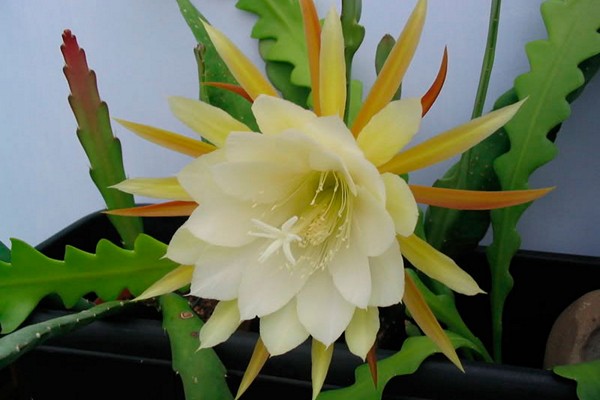
The cactus loves bright lighting, so you need to place it in the right place. An epiphyllum growing in indoor conditions will be comfortable under the sun's rays in the morning and evening, but during the spring-summer period, in the daytime, it must be protected from the sun. Fluorescent lamps can be used to increase the illumination. If the plant lacks light, then it will bloom poorly or not at all, and the cactus will stretch out unnecessarily.
By placing the plant on the southwest side or southeast side of the window, the plant will always get the right amount of light. The south side is also suitable, but in the daytime the plant will need to be shaded using tulle. If there is an opportunity to grow a plant only on the north side, then artificial lighting must be created. In order for a cactus to have uniform growth, it must be periodically turned in different directions to the light source. This should not be done during the budding and flowering period.
Epiphyllum is not a demanding plant for the level of humidity, but in the case of too dry air at high temperatures, spraying should be carried out using soft and warm water. When spraying plants, do not allow water to get on the buds and flowers. You can carry out these activities until noon, so that by the evening all the moisture has time to evaporate.
To increase the humidity, you can use a humidifier, or place a jar of water near the cactus. Wet pebbles placed on a tray under the pot and placing other plants near the epiphyllum will help maintain a good level of moisture. Using a decorative fountain will not only increase the humidity level, but also become an additional decoration.During the autumn - winter period, the air does not need to be humidified, especially if the room temperature is lowered.
Description and properties of the epiphyllum
The homeland of phyllocactus is the subtropics and tropics of South America. There it grows like an epiphyte on trees or rocks, but indoors it is grown as a pot culture. The plant is a sprawling bush with long, drooping shoots. Stems similar to leaves are scaly at the base, covered with small needles.
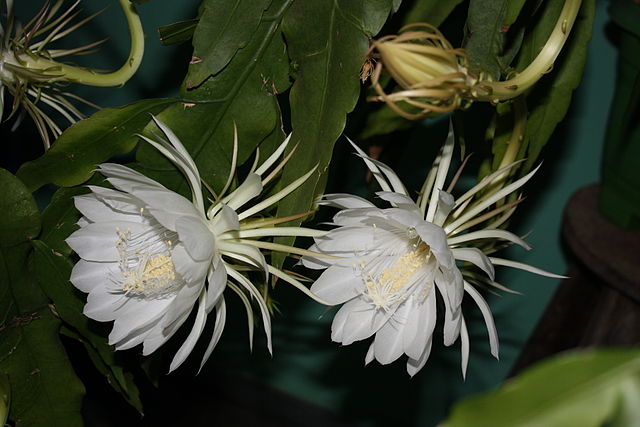 Epiphyllum is often confused with another plant - the Decembrist
Epiphyllum is often confused with another plant - the Decembrist
The perennial begins to bloom in mid-spring, throwing out large funnel-shaped buds on long arrows. Later, instead of them, oval spiked fruits of a raspberry or red hue appear. Their flesh is edible, sweetish in taste, with strawberry notes.
In addition to decorative qualities, forest cactus has medicinal properties:
- relieves headaches, joint pain;
- helps the body to cope with colds;
- increases blood clotting;
- relieves hangover symptoms;
- accelerates the regeneration of the skin;
- relieves inflammation;
- removes toxins;
- enhances immunity;
- strengthens the central nervous system.
Diseases and pests
Unfortunately, Epiphyllum, like other cacti, is attacked by pests and diseases. Something can be cured, but there are also diseases that make themselves felt too late, when the plant is already dying. Below, the most common pests and diseases of Epiphyllum will be listed.
Mealybug - it is easy to recognize it - this is a white insect that leaves a coating on the stems of the same white color. You can deal with it in different ways. The fastest way is spraying with a special preparation, but you can do without it. This requires alcohol and a cotton swab.
Soak the tip of a cotton swab in alcohol and go over all the places where there is a white coating, as well as on the insect itself. You can completely wipe the entire plant, this will only be a plus. After alcohol treatment, make a soapy solution and spray the cactus well with a spray bottle, then let stand for 10-15 minutes. Then, the plant should be rinsed with warm water.
Aphids, spider mites and scale insects are other pests that are common on cacti. The best way to deal with them is treatment with special preparations, usually in two stages. The break between spraying is about 7-10 days, no more.
Black rot - this disease can be identified by the black spots that appear on the stems. Infected areas must be cut out, and if this is not possible, then completely remove the affected stem. All places of the cuts are sprinkled with ash, and the cactus is sprayed with a preparation.
Dry rot is the most insidious disease from which the plant cannot be saved. Signs of damage in the form of drying up stems appear too late, when nothing can be helped.
Rust - The main symptoms are brown and reddish spots that appear throughout the plant. The reason is improper watering, especially during dormant periods and low water temperatures. It is treated with a special treatment.
Fusarium is another disease associated with improper plant care. If the cactus porridge began to change color to burgundy or slightly reddish, then this is fusarium. The main reason is too frequent and excessive watering, which also affects root decay.
For treatment, you can use a special preparation, but, as a rule, the plant is dug up, all damaged roots are removed and transplanted into a new pot with new soil. Also, the first watering should be done no earlier than a week later and only with warm boiled water.
So, if your pet is attacked by fungi, it means that you are doing something wrong.
Propagation by cuttings
How to propagate and root an epiphyllum? The plant can be propagated in one of the simplest ways - by cuttings.For this, there are several important points that will help grow a cactus:
- cuttings are taken about 10 cm long from a mature stem, which are cut off at the base of the trunk. Collect the right amount of healthy leaves;
- store cuttings in a cool and dry place, protected from the sun. Storage lasts 10-14 days, but it may well withstand a month. Such storage is favorable for the treatment of the flower, and the growths at the ends become coarser, which will protect the cuttings from decay;
- in a 10 cm pot, a maximum of 3 cuttings are grown. There should be a drainage hole in the pot, and it is better to choose a plastic pot itself, since terracotta weakly retains moisture.
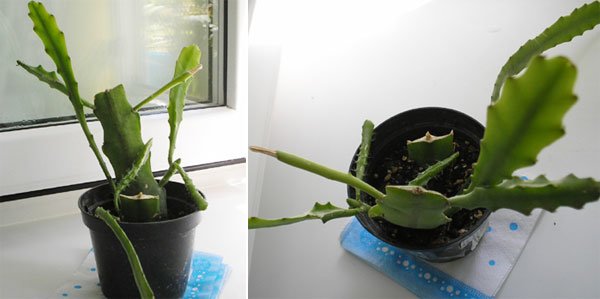
The next step is to choose a pouring mix. The mixture includes three parts of soil mixed with perlite. Planting in pure perlite is possible, but when roots appear in the cuttings, the epiphyllum is transplanted into the filling mixture.
Watering the cuttings is permissible only after good rooting. If the sprouts can be easily pulled from the soil and at the same time a rotting process is observed at the ends, then pruning should be carried out immediately. Such cuttings are treated and planted again.
Diseases
Epiphyllum without good care will become a target for disease. The plant is susceptible to fungal infection and viral mosaics.

Viral mosaic damage is very difficult to cure
When a flower is watered with cold water, over time it becomes covered with round spots - these are signs of a fungal infection. Darkening is clearly visible on the stems. It is necessary to dig out the bush, dry the roots, remove the damaged ones and treat the entire crown with roots with a fungicidal preparation. In the future, they try not to flood the flower.
If small white spots appear on the stems, it means that the plant has become infected with a viral mosaic. It is extremely difficult to save a sick epiphyllum; it is better to prevent the disease by protecting it from contact with diseased flowers.
Popular home-grown species
Epiphyllum Anguliger (Epiphyllum Anguliger) Angular
Quite a popular look. Both in nature and at home it grows very much. Stems woody closer to the base. During the flowering period, the cactus will delight you with beautiful and fragrant flowers, which, when opened, can reach 10 cm. Also, this species is also known as "Angular Epiphyllum".
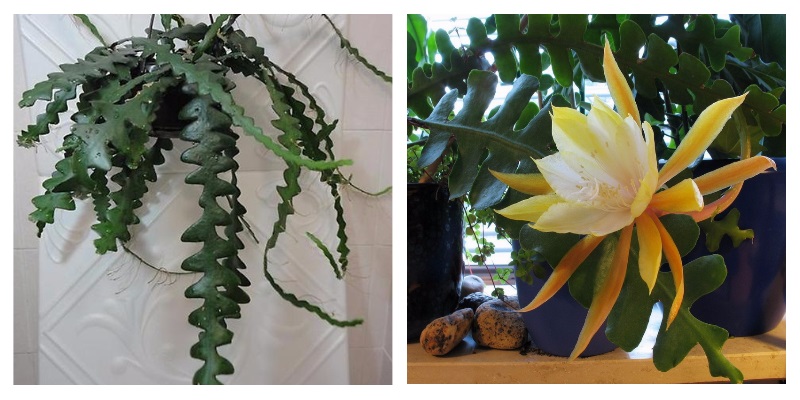 Epiphyllum Anguliger / Flowering
Epiphyllum Anguliger / Flowering
Epiphyllum Oxypetalum
This species is remarkable in that it is capable of growing up to 3 meters in height even at home. The stems are long, shaped like twigs. The cactus blooms beautifully, and the flowers themselves can have a different shade. The cactus has another name - "Acid-petal".
 Epiphyllum Oxypetalum / Blossom
Epiphyllum Oxypetalum / Blossom
Epiphyllum Akerman (Epiphyllum Akermanii)
Another equally popular type. Quite often, it is planted in a hanging pot with the stems hanging down. The cactus does not grow especially strongly. The stems are serrated. During the flowering period, the plant will greatly delight the owners, with a large number of bright red flowers of medium size. Looks very pretty!
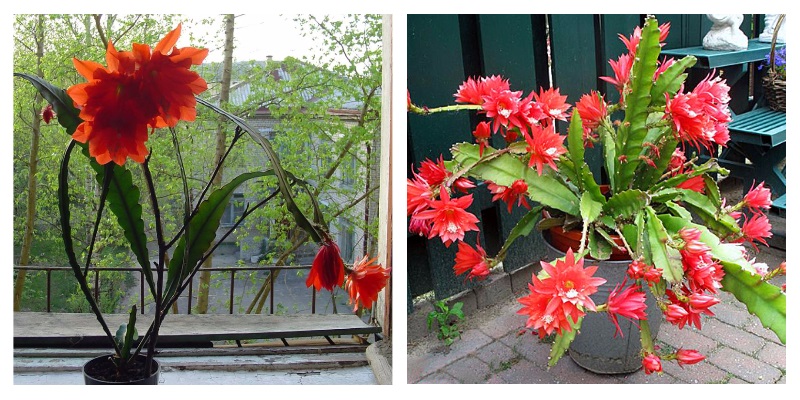 Epiphyllum Ackermann
Epiphyllum Ackermann
Epiphyllum Guatemalense
Among the representatives of this species, you can find two varieties. They differ among themselves by stems. In the first, the stems resemble oak leaves, which are, as it were, interconnected. In the second variety, the stem has a different shape and it develops completely arbitrarily. The flowers are the same for both varieties and come in several shades of pink.
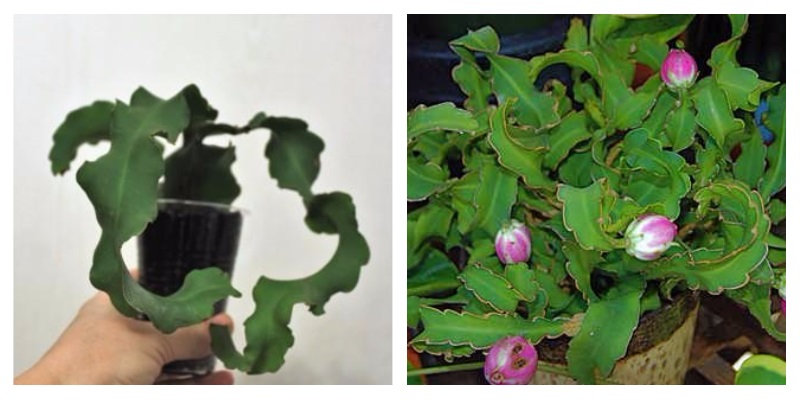 Epiphyllum Guatemalan
Epiphyllum Guatemalan
Epiphyllum Epiphyllum Hookeri Epiphyllum White
Perhaps the only Epiphyllum that has several names - Hooker, Hollyleaf and White. It is best to plant such a cactus in a wide floor pot or hanging, as it grows quite a lot. Hollyleaf was nicknamed because of the shape of the leaves on the stems, and white because of the flowers. By the way, the cactus blooms beautifully. There are many flowers, they are large, white, smell good and hang down.
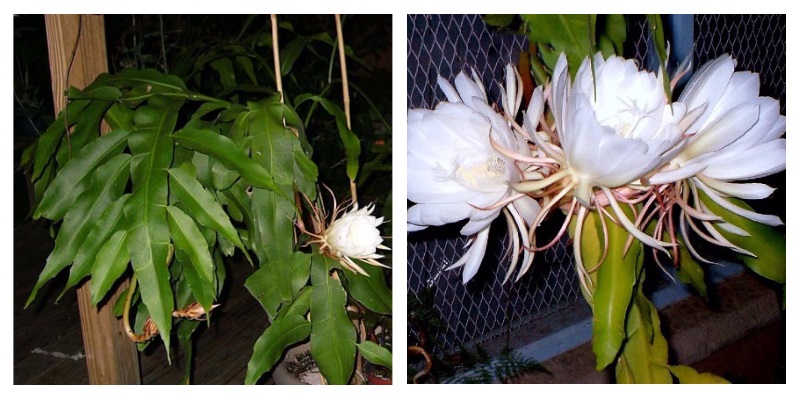 Epiphyllum Hollyleaf / Blossom
Epiphyllum Hollyleaf / Blossom
Epiphyllum Laui
The plant has rather thick stems. It grows both in height and width. A feature of the cactus is its large, slightly yellowish flowers, which open after sunset and exude a pleasant smell.
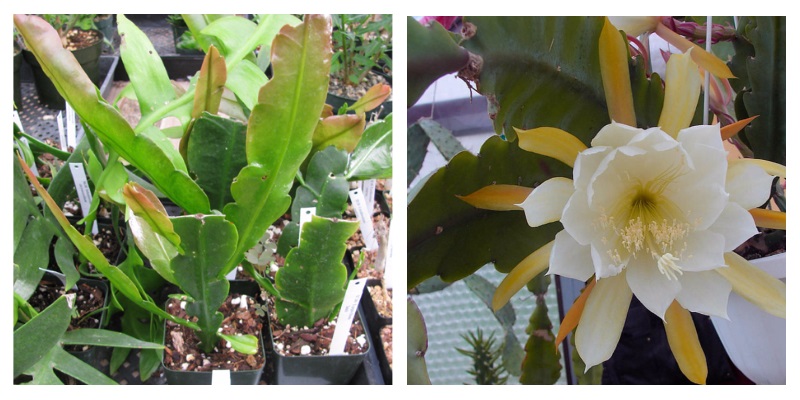 Epiphyllum Lau / Flowering
Epiphyllum Lau / Flowering
Epiphyllum serrated (Epiphyllum Crenatum)
The cactus received this name due to its stems. Usually, this species grows up to 1 meter, no more. Most often, they plant a cactus in a hanging pot or cling to a trellis. During the flowering period, it throws out flowers of medium size, white or yellow.
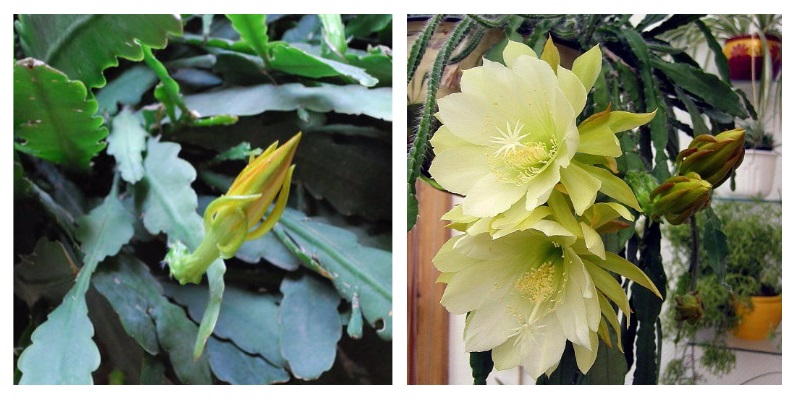 Epiphyllum serrated
Epiphyllum serrated
Epiphyllum Marniera (Epiphyllum Marniera)
I would like to note right away that this species was mistakenly attributed to Epiphyllum, because it belongs to the Selenicereus genus, and its correct name, Marniera, is yellow-hearted. This species grows quite sprawling, has long stems with large leaves. During the flowering period, the cactus throws out several flowers, the diameter of which, when opened, can reach 25! see The smell is very strong and pleasant.
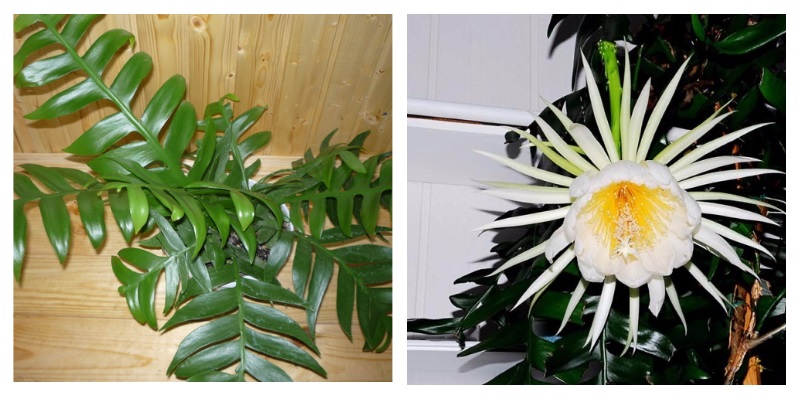 Epiphyllum Marniera / Blossom
Epiphyllum Marniera / Blossom
Signs and superstitions
There is a belief that if the epiphyllum blooms, you can soon expect a child in the family.
The cactus protects the home from uninvited guests, the evil eye and bad thoughts. But you cannot give it, it will lead to separation from your loved one.
Single girls are not recommended to have a tropical flower, it scares off grooms.
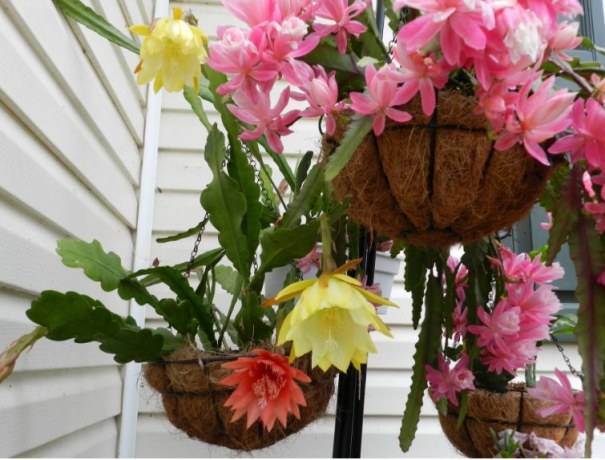
A variety of types allows you to choose the appropriate
Everyone has seen the epiphyllum plant, caring for it at home is simple. If you follow the rules of cultivation, you can make this tropical flower bloom and admire the falling flat leaves with large bright buds that will bloom at night.
vote
Article Rating
Dormant period
Cessation of growth and flowering in most epiphyllums occurs in the winter. It is during this period that you do not need to wash the flower and fertilize. They also reduce spraying and watering, monitor the temperature - too hot a temperature is not very favorable for a cactus.
One interesting fact that not all owners of the epiphyllum know about is the gift in the form of a fetus. After flowering, a kind of peduncle is attached to the stem - it is he who is the fruit that can be eaten! Since it is prickly, it is first cleaned of thorns. Most people who have tried the fruit of the epiphyllum have associations of a mixture of persimmon and banana flavors.
Epiphyllum types
Many natural and hybrid varieties of cactus are grown at home. Known species:
- Ackerman's Epiphyllum (Epiphyllum ackermanii) is a beautiful shrub with long hanging leaves and large red fragrant flowers. It is very common and undemanding to care for. During the flowering period, it is an indescribable beautiful sight.
- Epiphyllum angular (Epiphyllum anguliger) is a highly branching bush with lower leaves of a rounded shape. The upper part of the stems is a long dissected leaf up to 30 cm. It has large fragrant white flowers. There are varieties with lemon and pink flowers.
- Epiphyllum "Queen of the Night", or the oxypetalum Epiphyllum oxypetalum is a common species with upright spreading branches. The stems are woody at the base and have a rounded shape. Secondary leaves are thin, long and wide with wavy edges. Has fragrant white flowers.
- Epiphyllum serrated Epiphyllum crenatum is a common species with straight branching leaves. Secondary flat gray-green leaves up to one meter long and 10 cm wide with fine bristles emanate from the primary rounded woody stems. Large fragrant flowers bloom at night and last up to one week. Fruits are pointed, rounded.
- Epiphyllum Lau Epiphyllum laui is a relatively recently discovered species native to the rocky regions of Mexico. The stems begin to branch at the base of the bush.Secondary leaves with prominent veins have wavy edges and segments up to 7 cm wide. Areoles with small yellow-brown spines. White flowers up to 15 cm long open at night and last for two days. This species does not tolerate heat and loves coolness. Not used in hybridization.
- Epiphyllum low Epiphyllum pumilum - is distinguished by long lanceolate leaves with a serrated edge, forming whips up to 5 meters in length. Pink and white flowers bloom at night.
- Hooker's Epiphyllum (Epiphyllum hookeri) - has wilting leaves with a wavy edge, with a vein in the middle. White flowers have a fluffy core and thin petals.
- Epiphyllum phyllanthus (Epiphyllum phyllanthus) - has a pink flower, shoots reach up to one meter.
- Epiphyllum oxypetalum (Epiphyllum oxypetalum), or sour - a large bush can grow up to three meters in height. Wavy leaves, woody at the base, 10 cm wide. It has large white flowers.
Hybrid epiphyllums are popular:
- Jennifer Ann - with delicate lemon-colored buds;
- King Midas - distinguished by golden-orange flowers and long stems of dark green color, reaching a length of one and a half meters;
- Just Prue - characterized by pink flowers in the middle, framed by a dark pink border;
- Wendy-May - characterized by an unusual shape of a bright crimson flower: in the middle it has short petals, rounded at the ends, and at the edges - long with a pointed shape;
- Martina - with sharp-smelling red flowers with a yellow center. The stems are divided into separate oval segments;
- Johnson - stands out in bright scarlet colors;
- The unnamed species of Frank Nunn has flowers of a rolling color from white in the middle to bright purple at the edges.
Epiphyllum
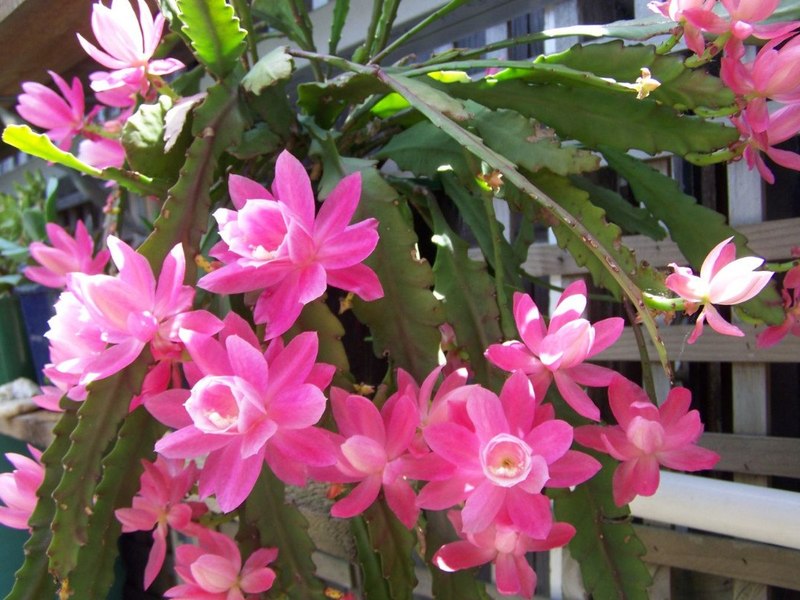
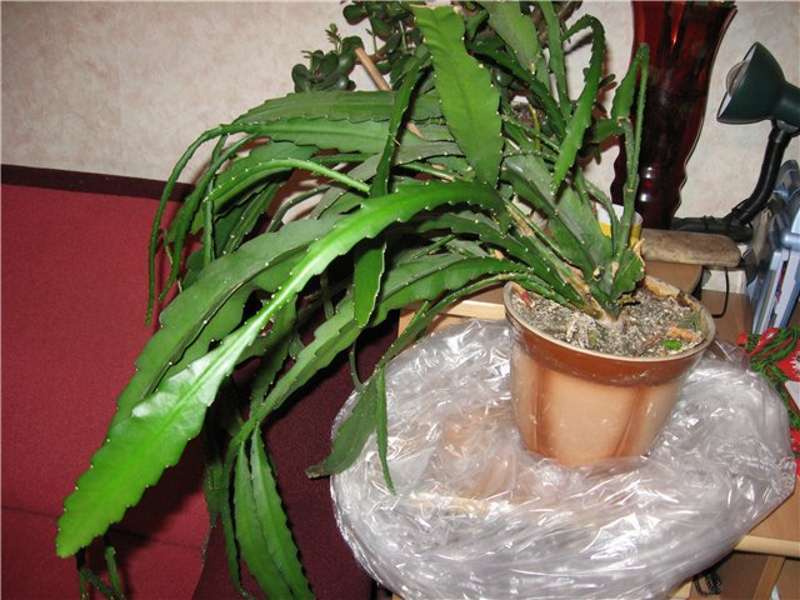
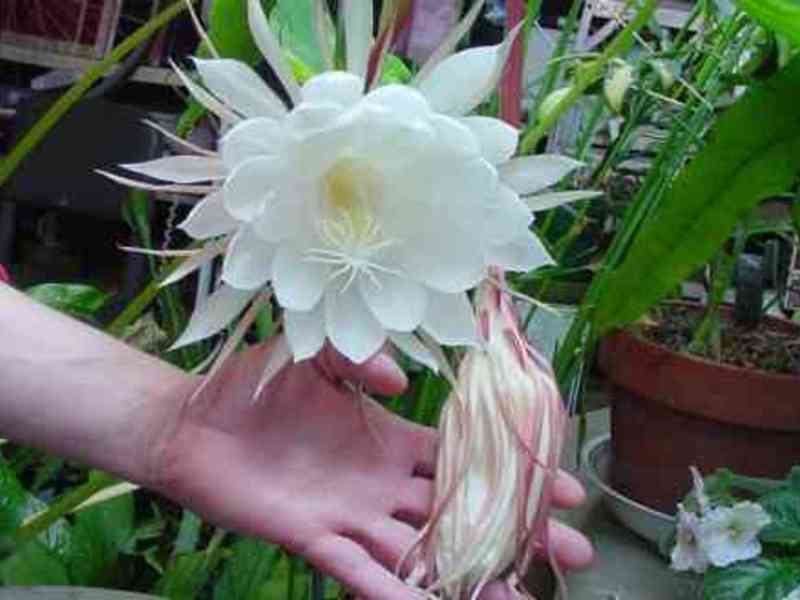
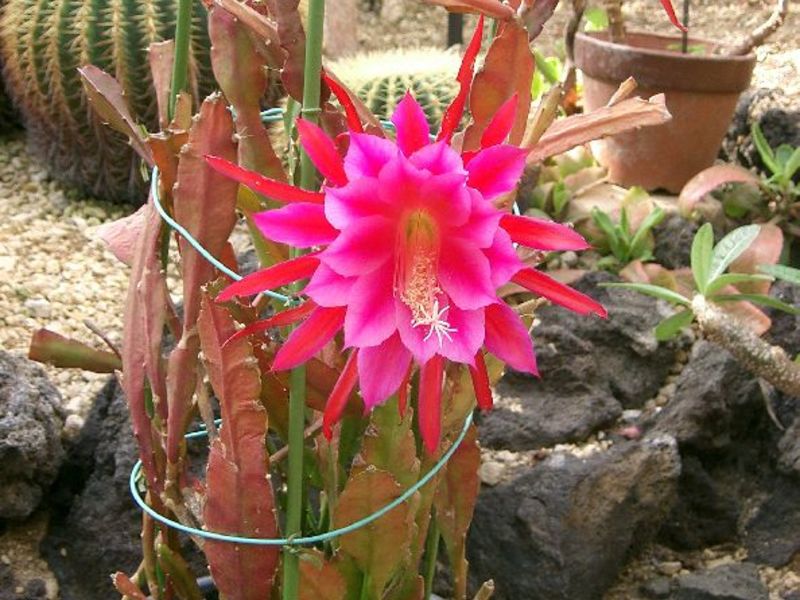
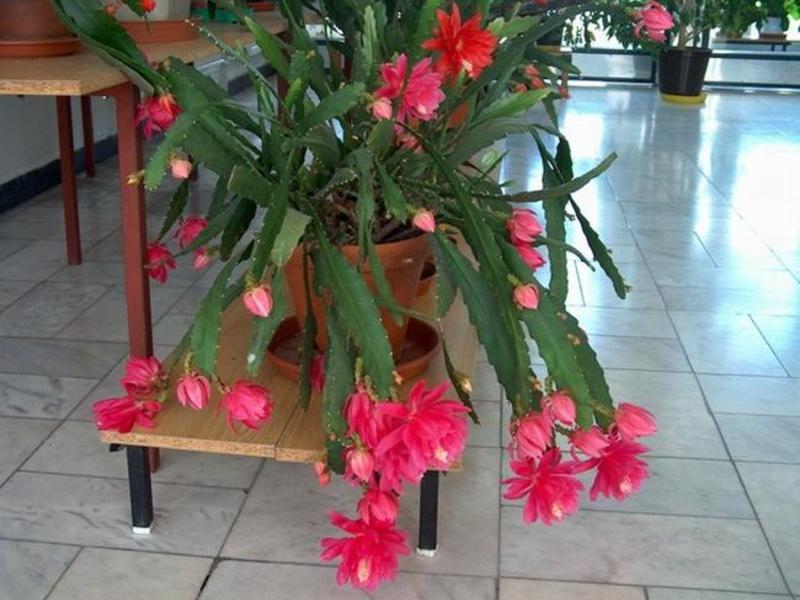
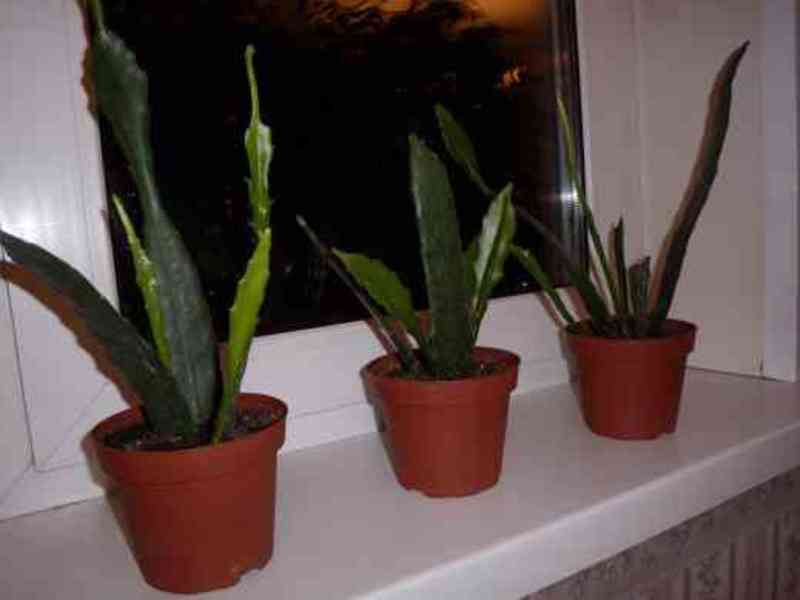
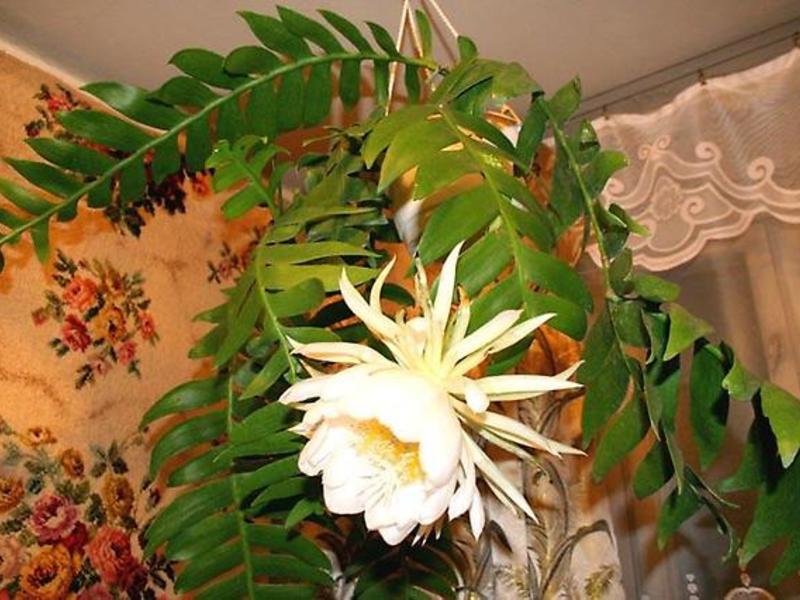

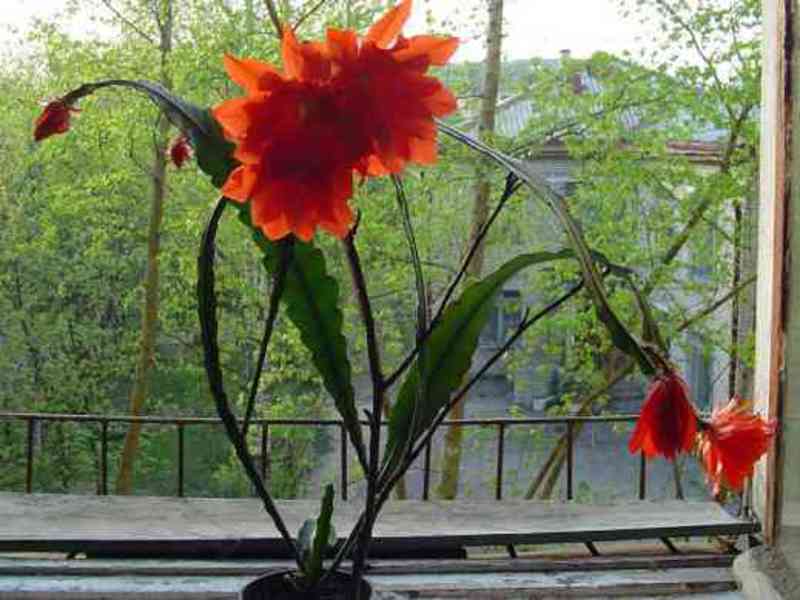
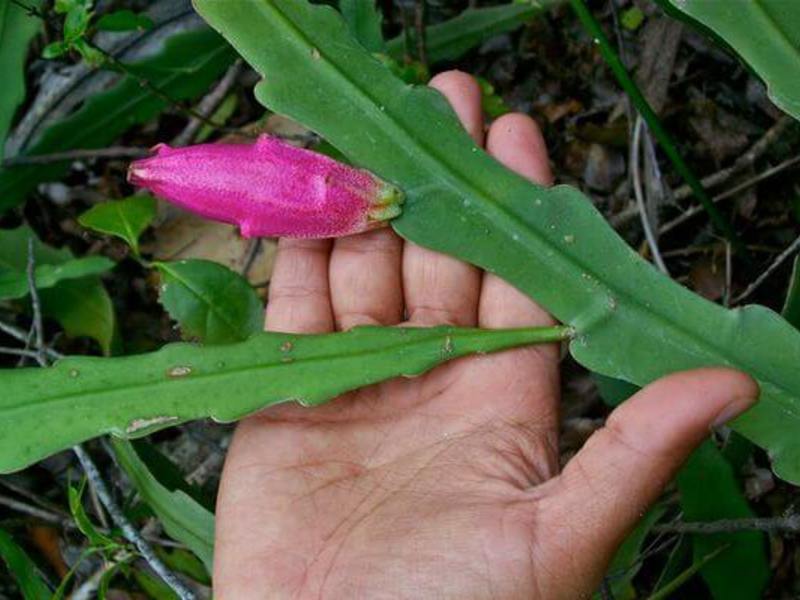
When and how to transplant epiphyllum
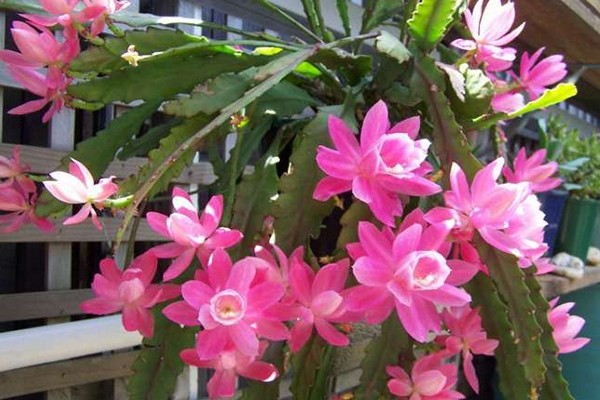
A transplant is carried out only if there is a need for it, for example, it is necessary to change the land or the plant has become cramped in the pot. This often should not be done, since the plant painfully tolerates transplants. Each time, after such procedures, the epiphyllum needs time to recover.
It is necessary to hold such events with the arrival of spring. At a young age, transplanting is carried out every 12 months in larger pots. In adulthood, once every 3 years. To determine the nadoli to carry out a transplant, you can use the tips of the roots, which begin to look out of the drainage holes. The best time to transplant is between new growth and bud formation.
If the buds have already formed or flowering has begun, then the transplant can be carried out only after the plant has faded. A cactus will do well in a shallow pot that has a large drainage hole. There should be a drainage layer on the bottom of the pot. Broken brick, pebbles, shards of their clay, expanded clay are suitable. An earthen mixture is poured on top.
After preparing a new place for the growth of the cactus, the plant is taken from the previous pot to a new place and planted at the same depth. During transplantation, the earthen lump must not be damaged. After transplanting, the plant is buried in the ground and compacted so that no air layers remain. This method of transplanting is called transshipment. This is the best way not to injure the root system and promotes quick adaptation and the beginning of growth.
After the plants are transplanted, they should be in a place protected from the scorching sun for a week. You can water it after 5 days. This time will be enough to adapt to new conditions and to heal wounds that may have appeared during the transplant.
There is also no need to apply fertilizers within 30 days, since the new soil mixture contains a sufficient amount of nutrients.
If you find rot on the bulbs, you must completely change the soil.When replanting plants, it is necessary to clear the bulb from the ground, inspect it and if there is rot on it, then cut it off with a clean and sharp knife, and then process it.
You should not transplant the plant to a new place with a clod of earth that is excessively wet. It is necessary to blot the roots with soft paper and leave to dry for several hours on an open window or in the garden.
With any, even insignificant, appearance of rot on the plant, it should be transplanted only into a new soil mixture, and the old one should be disposed of, since the fungus remains there.
For a cactus, you should not choose large pots, as the plants will begin to develop their root system, and not its green part. Since this process lasts long enough, the soil in the pot that is not involved will begin to sour due to excess moisture, which will cause rotting of the roots. Cactus blooms best when grown in small pots.
Soil selection:
This species differs in that it needs a nutrient soil with good water and air exchange and a low acidity level. A mixture that is used to grow cacti and succulent species is perfect. It will be enough to add turf and humus from leaves to it, they will saturate the soil with all the necessary elements.
To loosen the soil and increase its fertility, you need to mix it with charcoal in a small amount.
To increase drainage, which is very important for the plant, you need to add a little river sand, perlite there. With the age of the plant, both the level of acidity in the soil and the amount of peat should increase.
Flowering epiphyllum
Each plant variety blooms differently, has its own time for flowering. Epiphyllum white and red can differ not only in color, but also in the shape, smell and size of the flower. In order for the plant to bloom, the pot must be on the windowsill on the east or west side. During the summer, the cactus can be outdoors, but direct sunlight should be avoided.
Flowers bloom in turn, each blooming from a few days to a week. Flowering begins in the spring, usually in mid-April, but some species of phyllocactus bloom again in the fall.

Abundant flowering
Reasons why it does not bloom
If a plant is improperly cared for, it may stop blooming. Failure to comply with the temperature regime, lack or excess of moisture affect the forest cactus. Why epiphyllum has not bloomed for a long time:
- Excessively high air temperature during wintering;
- Excess nitrogen in the planting soil;
- Insufficient watering during the hot season;
- Excessive watering in winter;
- Lack of lighting;
- The presence of fungal diseases in the plant.
Note! Do not move or turn the pot with the plant during the flowering period - the epiphyllum can shed flowers and unblown buds
Ways to make bloom
A cactus can only bloom if it grows in a favorable environment. It makes no sense to force a plant to bloom if it is in the wrong conditions. If the flowers have not been available for a long time, most likely, the rules for caring for the plant have been violated.
How to make epiphyllum bloom:
- Check the amount of moisture. Humidity should not be elevated, and the plant should not be in dry ground;
- Provide sufficiently bright diffused lighting. If the flower stands on the windowsill from the north side, and there is no possibility to place it in the west or east, it is necessary to move it as close to the window as possible;
- Introduce top dressing, if this has not been done for a long time;
- Check the composition of the fertilizers used for the presence of nitrogen. Fertilizers may be preventing flowering;
- Provide the plant with a dormant period, place it in a cool room during the winter;
- Trim old woody shoots and stems;
- Remove trihedral shoots, flowers rarely form on them;
- In early spring, you can spray the cactus with warm water from a spray bottle. Many gardeners use this method to help the plant "wake up", soon thickenings appear on the stems - future buds;
- Check plant stems for blotches or outgrowths. It is possible that the cactus is affected by a fungus that slows down its growth and interferes with flowering.
The choice of dishes and soil for planting
For proper vegetation and beautiful flowering, the pot in which the cactus is grown is of great importance. When choosing a container, the size of the plant and its tendency to grow upwards are taken into account. Adult flowers are transplanted at the age of 3-4 years only after roots sprout from the bottom in the pot through the drainage holes. Young specimens are changed land annually.
On this topic:
BACK
FORWARD
1 of 4
Pot size
The cactus does not have a very large rhizome, so it prefers shallow containers. For the epiphyllium to bloom actively, the pot must be small for its rhizome. This stimulates the flower to bud. When transplanting overgrown specimens, flowerpots are taken, which are 2-4 cm larger than the previous ones.
Cookware shape
Many growers try to grow cacti in rectangular containers so that as many pots as possible fit on the windowsill. But this approach is wrong, since the close arrangement of plants prevents free air circulation. This can lead to root rot due to moisture disturbance. Therefore, for the epiphyllum, it is better to take a round pot.
Plant substrate epiphyllum
For growing a cactus, it is best to buy ready-made soil. You can also prepare the substrate yourself. To do this, you will need 4 volumes of turf and leaf land, as well as 1 volume of peat, river sand and charcoal. These five components will need to be mixed thoroughly. If everything is done correctly, the soil will turn out to be loose and breathable.

